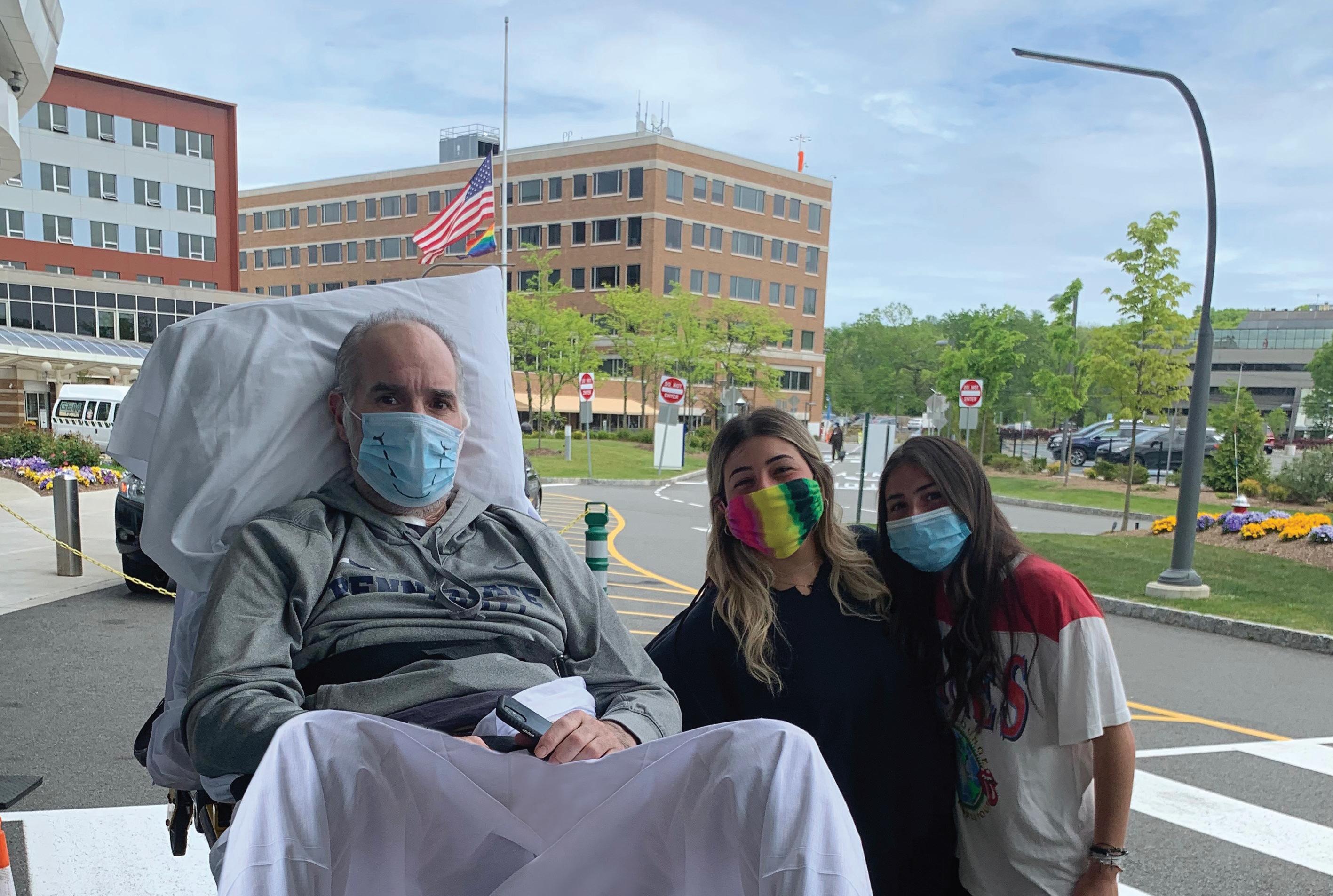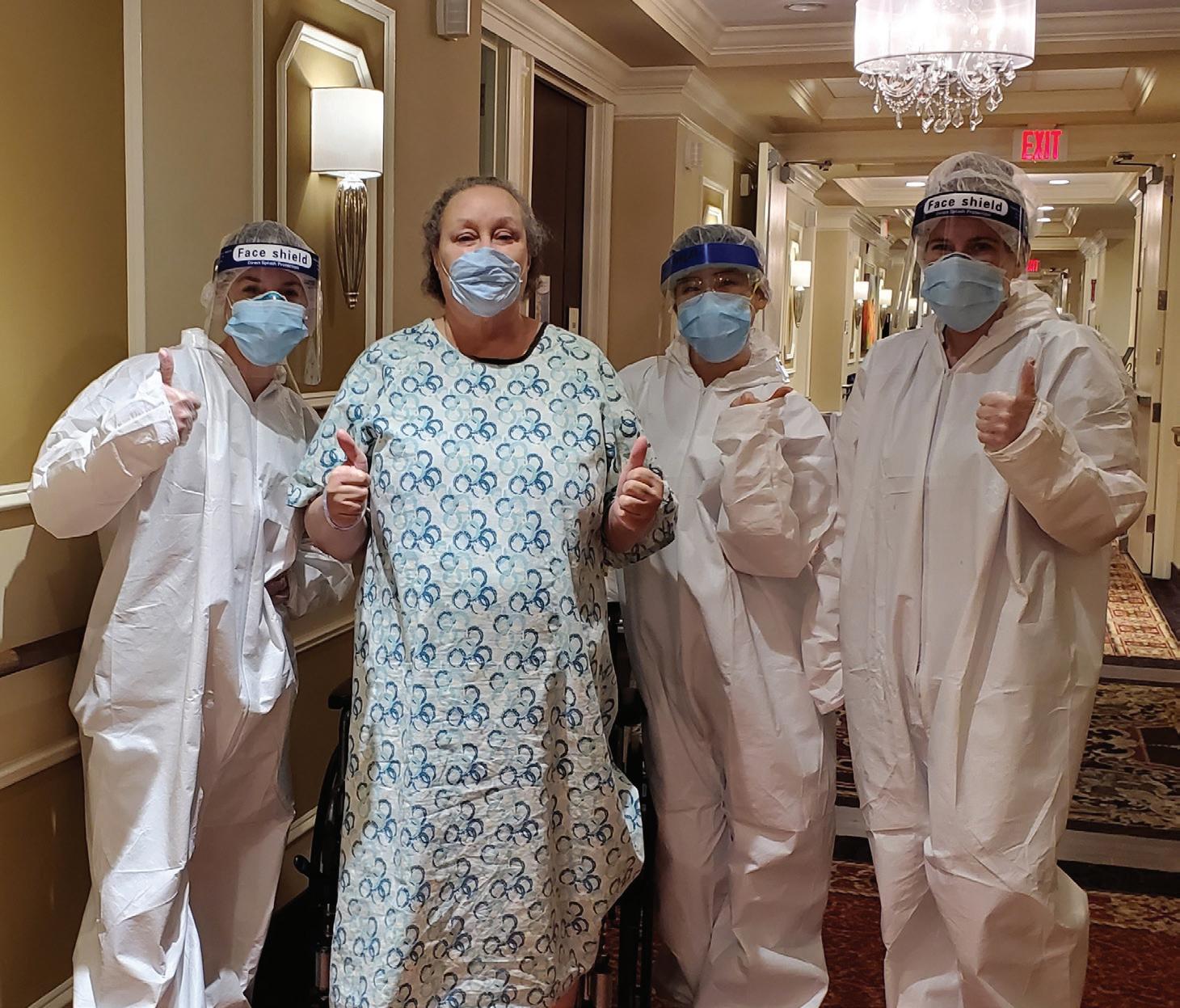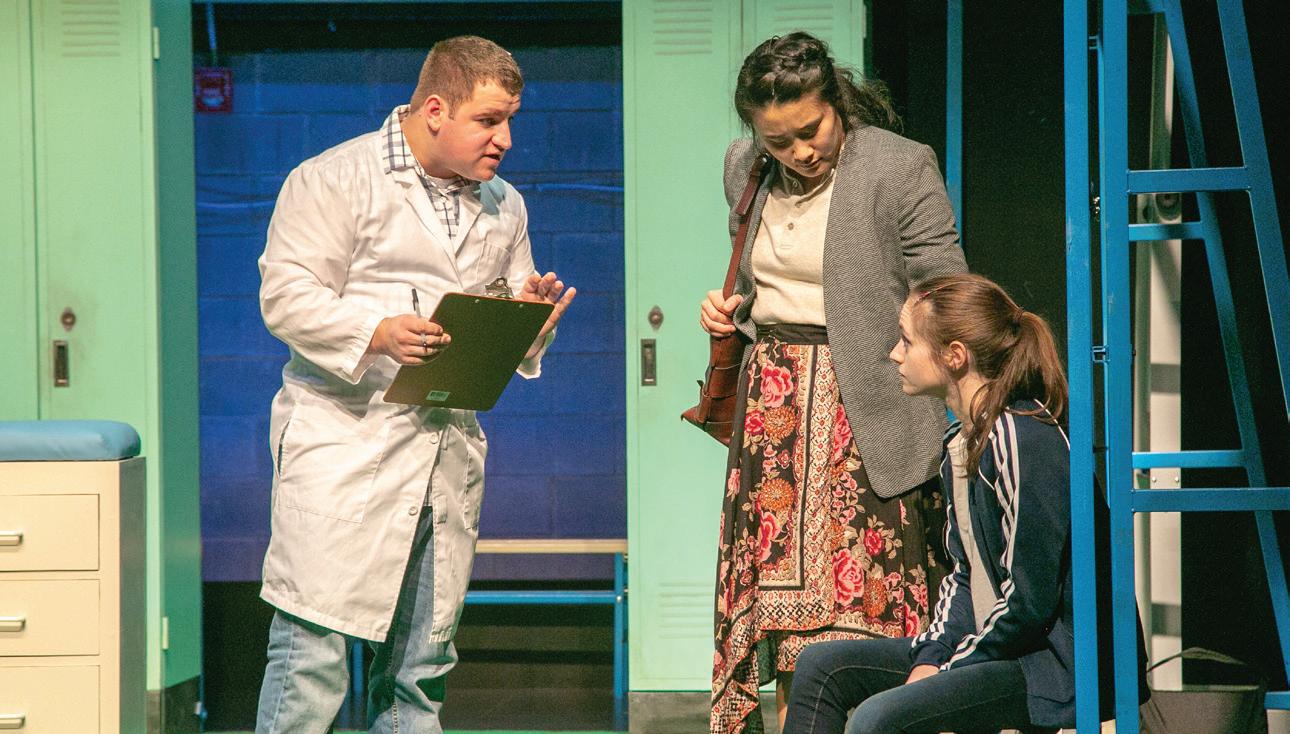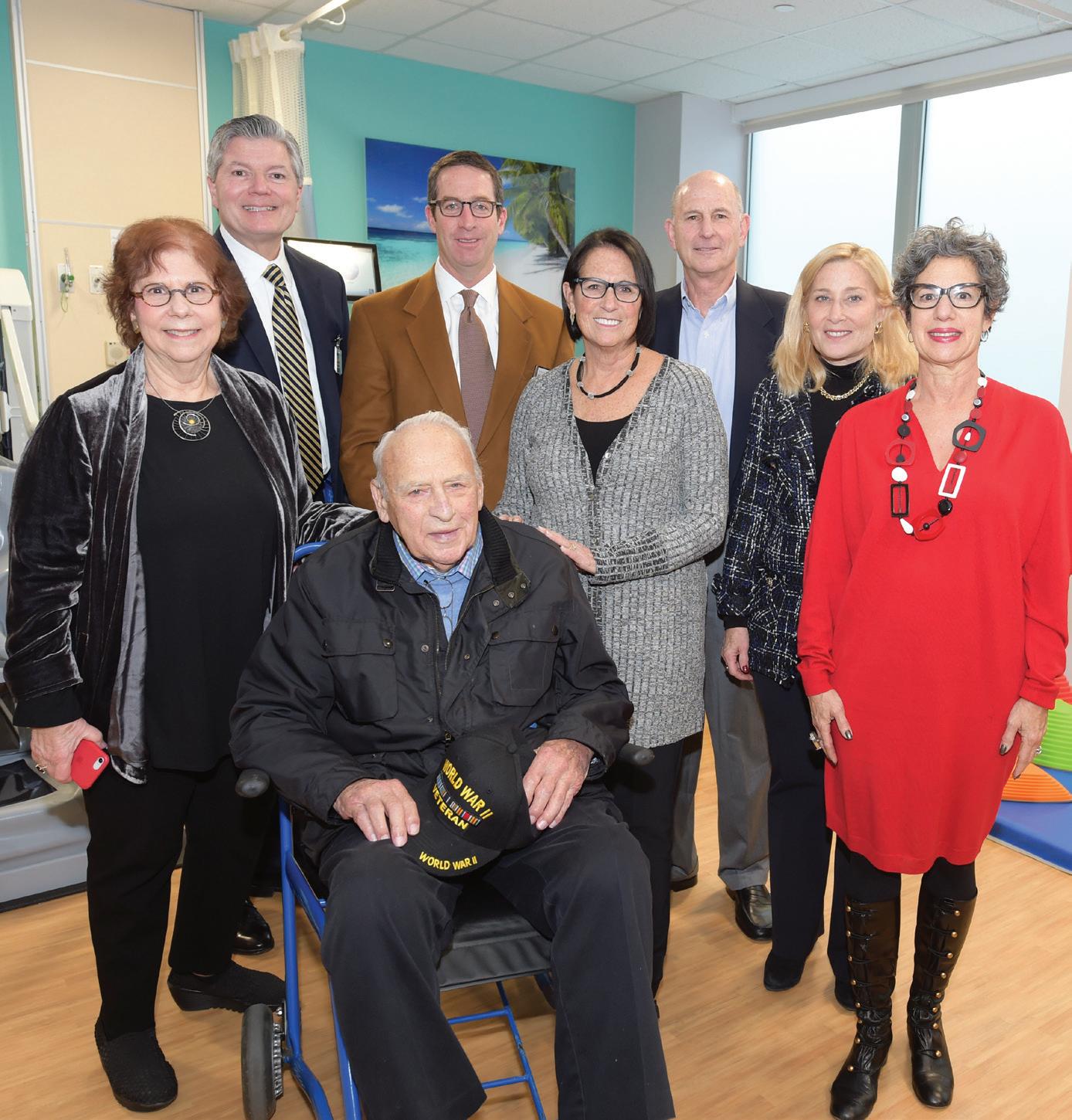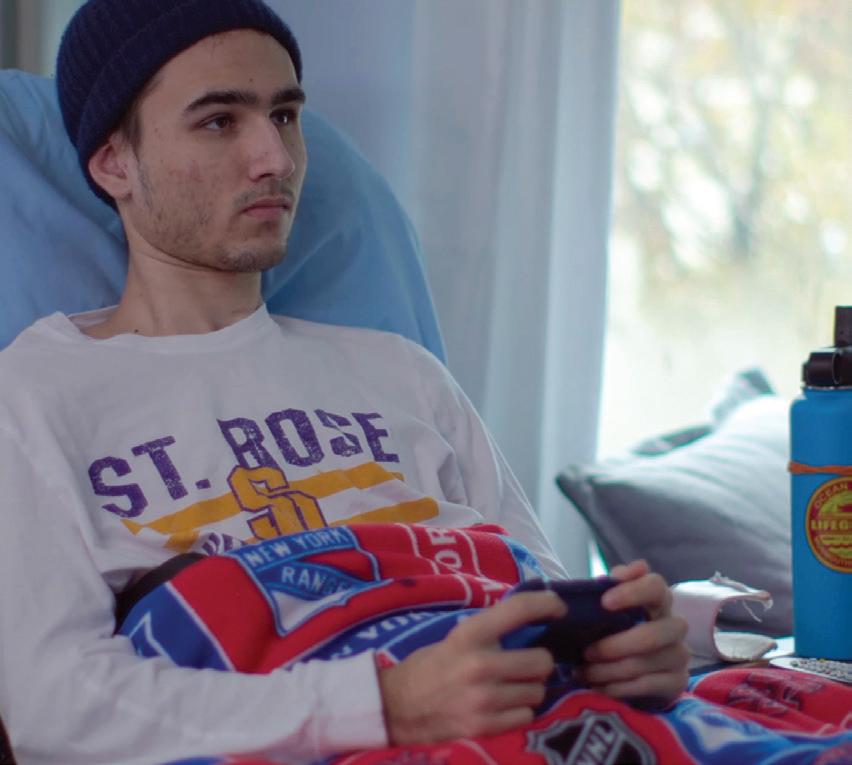
4 minute read
WHAT DOCTORS WISH YOU KNEW ABOUT STROKES. Why fast
WHAT DOCTORS WISH YOU KNEW ABOUT
STROKES



THEY’RE COMMON—BUT ALSO PREVENTABLE, AND TREATABLE IF YOU ACT FAST.
When the brain’s blood supply is interrupted by a blocked or broken blood vessel, stroke occurs. Blood cells, deprived of oxygen and nutrients, begin to die, and important body functions can be impaired.
“Stroke is an extremely signifi cant condition,” says Danielle Haskins, MD, Medical Director of the Comprehensive Stroke Center at Saint Barnabas Medical Center (SBMC). “About 800,000 strokes occur in the U.S. every year. And stroke is actually the fourth-leading cause of death in New Jersey.”
Th e thing Dr. Haskins most wishes people knew about stroke, however, is not just that it’s common and dangerous. It’s that most of the deaths and disabilities caused by stroke could be avoided.
“I wish people understood that they’re really in the driver’s seat with regard to stroke prevention,” Dr. Haskins says. “Up to 80 percent of all strokes could be prevented if people would control the risk factors.”
WHAT YOU CAN DO
Some risk factors aren’t controllable—for example, aging (the chances of having a
Fis for Face Drooping: It’s a cue to see if one side of the face is numb or droops.

Ais for Arm Weakness: Watch for numbness or weakness in one arm. S is for Speech: It refers to diffi culty speaking or being hard to understand.

Tis for Time to Call 911: If any of these symptoms appears, call for emergency help right away.
Other symptoms to look for, according to the American Stroke Association:

• Sudden numbness or weakness of the leg • Sudden confusion or trouble understanding • Sudden trouble seeing in one or both eyes • Sudden trouble walking, dizziness, loss of balance or coordination • Sudden severe headache with no known cause
stroke go up as you get older) and having a family history of stroke. If you do have such a history in your family, be sure your doctor is aware of it.
Controllable risk factors, on the other hand, are areas in which you can take medication and make lifestyle changes to prevent stroke.
Hypertension, or high blood pressure, is the leading cause of stroke. It may not have symptoms, so be sure yours is checked regularly.
Other conditions that can be managed in consultation with your physician include high cholesterol, uncontrolled diabetes and obesity. Heart conditions, including irregular heartbeat and coronary artery disease, also increase stroke risk. Lifestyle changes that lower a person’s chance of having a stroke include quitting smoking, maintaining a healthy weight and drinking no or only moderate amounts DANIELLE HASKINS, MD of alcohol.
SYMPTOMS AND SPEED
One of the most striking things about strokes is how quickly they can happen. “Stroke typically happens over the course of seconds, or maybe minutes,” Dr. Haskins says. “One of the more common things I hear is, ‘I was fi ne half an hour ago.’”
Advances in stroke treatment mean that today it’s far more likely for a person to survive without serious disability than ever before. However, every minute between the onset of a stroke and getting treatment is critical.
“Close to two million brain cells can die each minute that they’re not getting blood fl ow,” Dr. Haskins explains. “If you show up at the hospital less than one hour aft er a stroke, you’re nearly twice as likely to have signifi cant improvement with treatment as if you showed up at two hours. Earlier is better.” Th e F.A.S.T. acronym (see illustration, above) reminds people what to watch out for.
If you do suspect a stroke, call 911. Emergency medical service responders can get you to the hospital fastest, and can even potentially treat you on the way there.
Comprehensive stroke treatment facilities, like the one Dr. Haskins directs at SBMC, allow doctors to greatly reduce the
HOW MUCH DO YOU KNOW ABOUT STROKE?
1. Which of the following is a controllable risk factor for stroke? ■ A. High blood pressure ■ B. Overweight ■ C. Diabetes ■ D. All of the above 2. Which of the following is not a possible symptom of stroke? ■ A. Sudden severe headache ■ B. One side of face drooping ■ C. Sudden rash ■ D. Diffi culty speaking 3. What should you do if you notice possible signs of a stroke? ■ A. Take a nap and see if it passes ■ B. Call 911 ■ C. Call your doctor ■ D. Ask someone to drive you to the hospital 4. Which of these can help prevent a stroke? ■ A. Drinking alcohol in moderation, or not at all ■ B. Regular physical activity ■ C. Quitting tobacco ■ D. All of the above
Answers: 1.) D 2.) C 3.) B 4.) D
damage of stroke. Th ey have special training and access to medications, equipment and procedures to break up and remove the blood clots that cause most strokes.
Of course, the best way to deal with a stroke is to keep it from ever happening, Dr. Haskins emphasizes. “Th at takes seeing your physician on a regular basis and identifying and controlling the risk factors you have,” she urges. “If you control those early, you may prevent the damage of stroke by avoiding it altogether.”
We’ve taken every precaution for the safety of our patients and team members. To learn more about stroke prevention and treatment at Saint Barnabas Medical Center, call 973.322.6500 or visit www.rwjbh.org/sbmcstroke.

